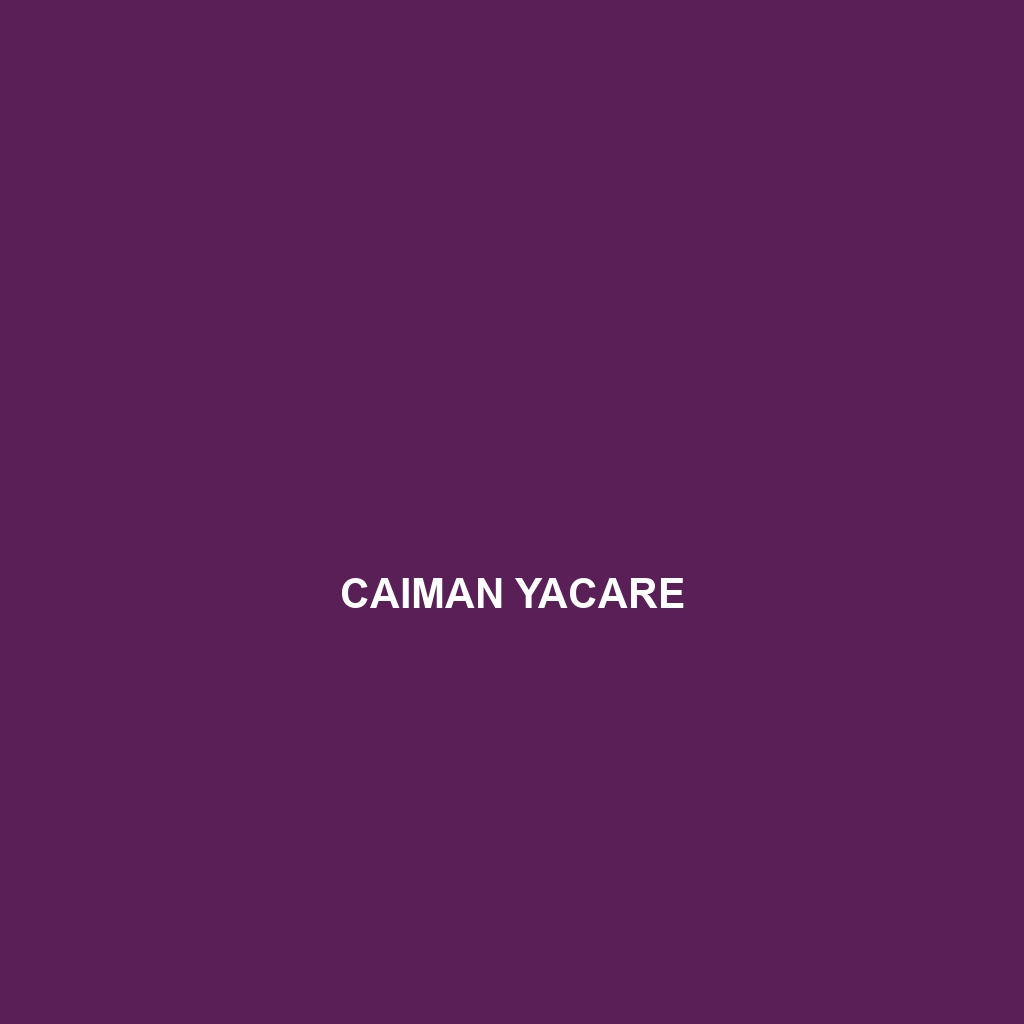Caiman yacare Species Description
Common Name: Caiman yacare
Scientific Name: Caiman yacare
Habitat
Caiman yacare primarily inhabits freshwater environments, particularly in the wetlands and river systems of the **South American** regions including **Brazil**, **Paraguay**, and **Bolivia**. Its preferred habitats include slow-moving rivers, swamps, and lakes, where dense vegetation provides both shelter and breeding grounds. This species is often found in areas with abundant aquatic plants, which serve as both camouflage and a hunting ground.
Physical Characteristics
Caiman yacare is a medium-sized crocodilian, growing up to **2.5 meters (8.2 feet)** in length. Its coloration exhibits a distinctive dark olive-green or brownish hue with lighter spots and stripes, aiding in camouflage within its habitat. The body is robust and long, with a wide, flattened snout that is ideal for its feeding habits. Notably, the caiman’s skin is covered in bony plates called **osteoderms**, which provide protection against predators and rivals.
Behavior
Caiman yacare is known for its semi-aquatic lifestyle, exhibiting behaviors that are both fascinating and essential for its survival. These caimans are generally **diurnal**, spending the day basking in the sun or patrolling their territories. During the night, they become more active hunters, often seen foraging alone or in small groups. Socially, they can be quite vocal, especially during the breeding season when males attract females with deep bellows.
Diet
Feeding primarily on a carnivorous diet, Caiman yacare consumes a variety of prey that includes **fish**, **amphibians**, and **small mammals**. This species utilizes its powerful jaws and sharp, conical teeth to capture slippery prey, often ambushing it from beneath the water’s surface. Juveniles tend to feed on smaller invertebrates and fish, gradually incorporating larger prey as they grow.
Reproduction
Caiman yacare has a distinct breeding season, typically occurring during the warmer months of the year. Courtship involves elaborate displays, and after mating, females build nests using vegetation, where they lay between **15 to 30 eggs**. The eggs incubate for about **80 to 90 days**, and upon hatching, the young are cared for by the mother, showcasing a notable level of parental care in reptiles.
Conservation Status
Currently, Caiman yacare is categorized as **Least Concern** by the IUCN, though it faces various threats including habitat destruction and hunting. Conservation efforts are essential to ensure their populations remain stable, especially in light of environmental changes that affect their habitats.
Interesting Facts
Caiman yacare is known for its adaptability to fluctuating water levels in its habitats, and it can often be seen basking in groups along riverbanks. Unlike many other crocodilian species, it tolerates a certain degree of **pollution** in its environment, showcasing resilience that captures the interest of researchers and conservationists alike.
Role in Ecosystem
As a top predator of the freshwater ecosystems, Caiman yacare plays a crucial role in maintaining the balance of its environment. By controlling fish populations, they help to promote biodiversity and healthy aquatic communities. Additionally, their nesting behavior contributes to sediment aeration and nutrient cycling in wetland ecosystems.
